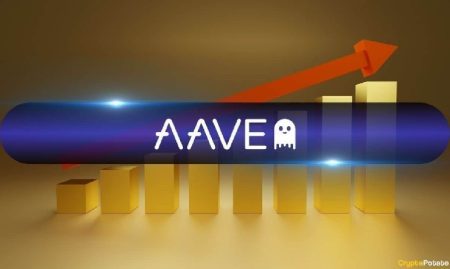Shibarium Hack Sends Shockwaves Through Meme Token Market as Investors Reassess Security Risks
Major Security Breach Highlights Vulnerability in Popular Cryptocurrency Ecosystem
In a significant blow to the meme cryptocurrency sector, a sophisticated flash loan attack targeting Shiba Inu’s layer-2 network, Shibarium, has drained approximately $2.4 million in Ethereum (ETH) and SHIB tokens, sending ripples of concern throughout the digital asset community. The security breach, which occurred on Sunday, has disproportionately impacted meme tokens compared to the broader cryptocurrency market, reflecting heightened investor sensitivity to security vulnerabilities in this specific sector.
The CoinDesk Memecoin Index registered a steep 6.6% decline in the 24 hours following the attack, significantly outpacing the 2.3% drop in the broader CoinDesk 20 Index. This divergence underscores the specific impact on investor confidence within the meme token ecosystem, which has become an increasingly significant segment of the cryptocurrency market despite its reputation for volatility and speculative trading patterns.
“What we’re witnessing is a targeted erosion of trust in the infrastructure supporting meme tokens,” explained cryptocurrency security analyst Miranda Whitfield. “When foundational technology like Shibarium experiences a breach of this nature, it compels investors to reassess the risk profile of the entire sector, often leading to more pronounced market reactions than we might see with established cryptocurrencies.”
The Anatomy of the Attack: Exploiting Validator Vulnerabilities
The attack demonstrated a sophisticated understanding of Shibarium’s architecture and governance structure. According to blockchain forensic experts, the attacker orchestrated a complex exploit by borrowing 4.6 million BONE tokens—the governance token for the Shiba Inu ecosystem—through a flash loan mechanism that required no upfront collateral. This strategic move enabled the attacker to temporarily gain control of the majority of validator keys, which serve as critical security gatekeepers for the network.
With this unauthorized control, the perpetrator effectively compromised the system’s ability to distinguish between legitimate and fraudulent transactions. This breach of security protocols allowed the attacker to execute unauthorized withdrawals from the bridge connecting Shibarium with the Ethereum blockchain—essentially the digital equivalent of temporarily hijacking a bank’s security infrastructure to approve illicit transfers.
Security experts have noted that the attack could have resulted in substantially greater losses had the Shiba Inu team not implemented certain safeguards. Specifically, the BONE tokens used to gain control were reportedly linked to validator 1 and remained subject to staking rules that limited the extent of the breach. Nevertheless, the incident has once again highlighted the persistent security challenges inherent in blockchain technology, even as it continues to mature and expand its reach into mainstream finance.
“The silver lining, if there is one, is that the security measures in place prevented what could have been a catastrophic event for the entire Shiba Inu ecosystem,” noted blockchain security consultant Dr. James Harrington. “However, the fact that such an attack was possible at all raises important questions about the robustness of security protocols in rapidly evolving blockchain networks.”
Market Impact: Declining Prices and Eroding Confidence
The immediate market reaction to the security breach has been decidedly negative, with SHIB experiencing its most significant price decline in three weeks. The token fell approximately 4% to $0.00001369 on Sunday (UTC) and has continued its downward trajectory, trading at $0.00001359 in recent sessions. Technical analysis reveals considerable volatility throughout the 23-hour trading window ended September 15, with price oscillations of approximately 4% from peak to trough.
Trading patterns suggest a period of heightened distribution pressure and potential capitulation. The session began with pre-dawn weakness as SHIB retreated from $0.000014156 to establish a significant low of $0.000013547. Transaction volume of 1.064 trillion tokens exceeded the 24-hour average, signaling robust selling pressure according to CoinDesk Research’s technical analysis models.
The BONE token, which initially experienced a dramatic price surge to over 36 cents, has since corrected sharply and is now down more than 2% on a 24-hour basis, trading at approximately 20 cents. Technical indicators suggest that while SHIB has established critical support at $0.000013547 during the elevated selling pressure, it has subsequently constructed successive higher lows and consolidation parameters between $0.000013600 and $0.000013780, potentially indicating the formation of a base for recovery.
Ripple Effects Across the Memecoin Ecosystem
The security breach has triggered broader market repercussions beyond the immediate Shiba Inu ecosystem. Dogecoin (DOGE), arguably the most recognizable memecoin and often considered SHIB’s primary competitor, experienced a 4% decline to 27.80 cents on Sunday and has since retreated further, losing an additional 5% to trade at 27.36 cents according to CoinDesk data.
Compounding the negative sentiment surrounding Dogecoin, blockchain tracking service Whale Alert reported a massive transfer of 119,306,143 DOGE—valued at over $34 million—from an unknown wallet to cryptocurrency exchange OKX. Such substantial transfers to centralized exchanges are typically interpreted by market participants as signals of potential liquidation intentions, further pressuring prices in an already bearish environment.
“What we’re seeing is a classic contagion effect,” explained cryptocurrency market strategist Elena Rodriguez. “When a significant security incident affects one major player in the memecoin space, it naturally raises questions about the security posture of other tokens in the same category. This risk reassessment, combined with large-scale transfer activity suggesting potential selling pressure, creates a perfect storm for short-term price weakness across the sector.”
Long-term Implications for Blockchain Security and Meme Token Credibility
The Shibarium attack represents more than just a temporary market disruption; it serves as a critical reminder of the evolving security challenges facing blockchain networks as they scale and increase in complexity. Flash loan attacks have emerged as a particularly troublesome vulnerability in decentralized finance (DeFi) ecosystems, enabling attackers to temporarily amass significant resources without collateral requirements, execute exploits, and return the borrowed assets within a single transaction block.
For the meme token sector specifically, which has often faced criticism for prioritizing marketing and community engagement over technical fundamentals, security incidents of this nature pose existential questions about long-term viability and credibility. As institutional investors increasingly explore cryptocurrency allocations, the robustness of security infrastructure becomes a key differentiating factor in assessing investment opportunities.
“This incident highlights the critical importance of comprehensive security audits and governance structures that anticipate sophisticated attack vectors,” said blockchain governance expert Dr. Sarah Westbrook. “For meme tokens to evolve beyond their speculative origins and establish themselves as legitimate financial instruments, they must demonstrate an unwavering commitment to security best practices and transparent incident response protocols.”
As the Shiba Inu team works to implement additional security measures and restore confidence in the Shibarium network, the broader cryptocurrency community will be watching closely to see whether this incident serves as a catalyst for enhanced security standards across the memecoin ecosystem or signals deeper structural vulnerabilities that could limit the long-term prospects of this distinctive and often controversial segment of the digital asset landscape.















